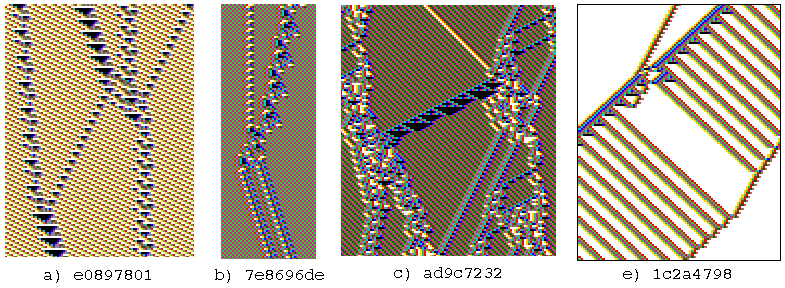
in
COMPLEXITY 4 [3] (1999) p. 47-66.
The 1998 pre-print is available in
PostScript /
pdf).

CA rules can be classified automatically for a spectrum of ordered, complex and chaotic dynamics, by a measure of the variance of input-entropy over time. Rules that support interacting gliders and related complex dynamics can be identified, giving an unlimited source for further study. The distribution of rule classes in rule-space can be shown. A byproduct of the method allows the automatic ``filtering'' of CA space-time patterns to show up gliders and related emergent configurations more clearly.
The classification seems to correspond to our subjective judgment of space-time dynamics. There are also approximate correlations with global measures on convergence in attractor basins, characterized by the distribution of in-degree sizes in their branching structure, and to the rule parameter, Z. Based on computer experiments using the software Discrete Dynamics Lab, this paper explains the methods and presents results for 1d CA.
Back to Discrete Dynamics Lab